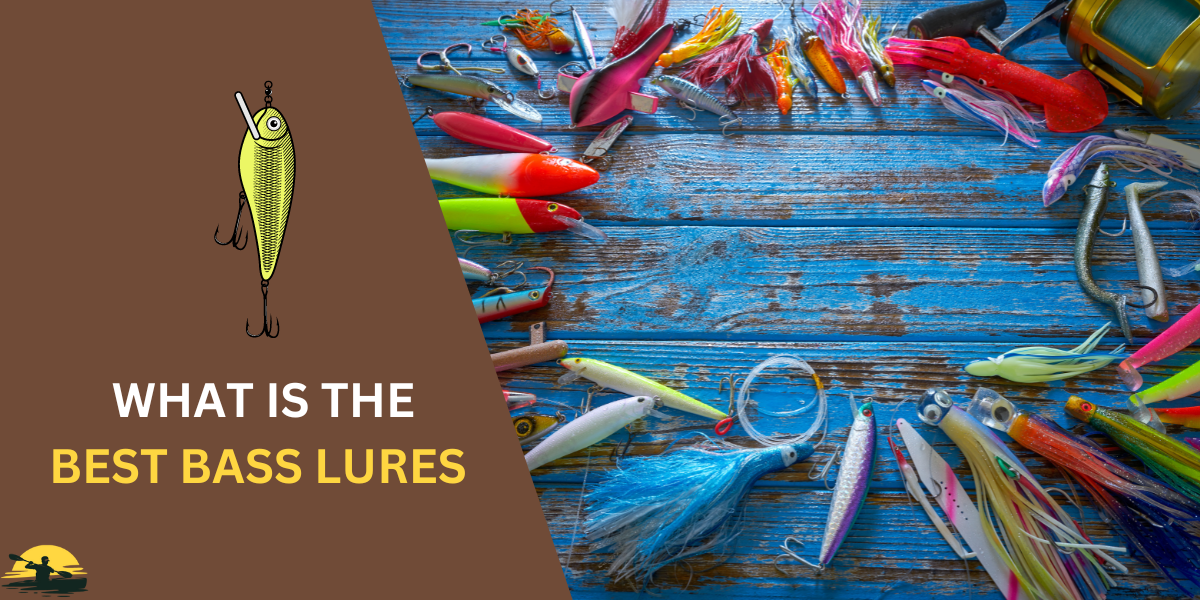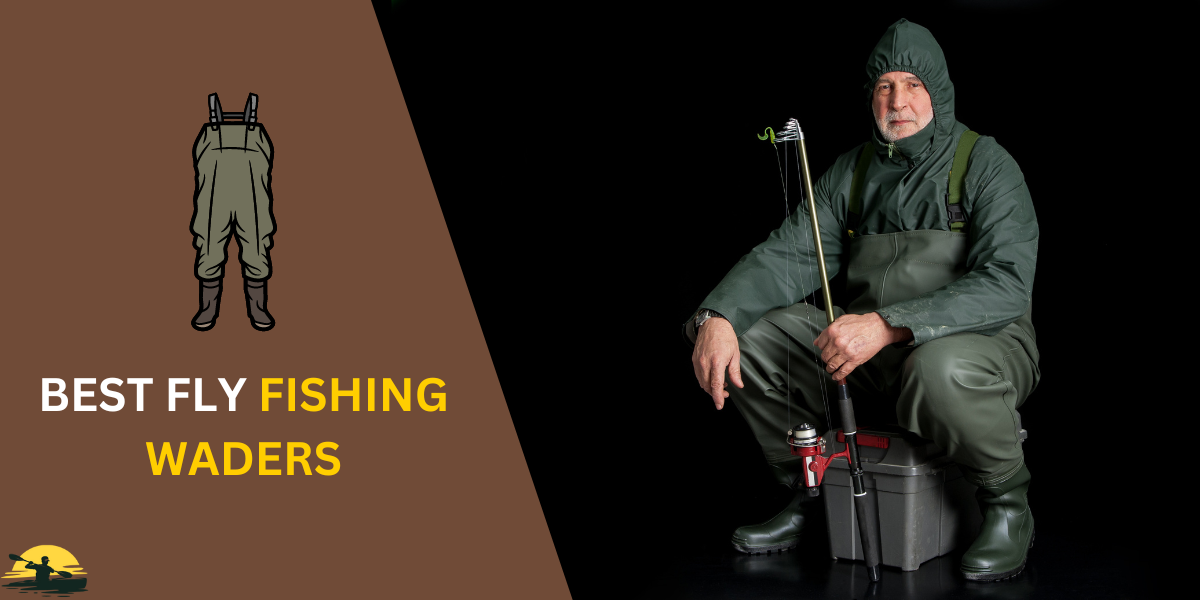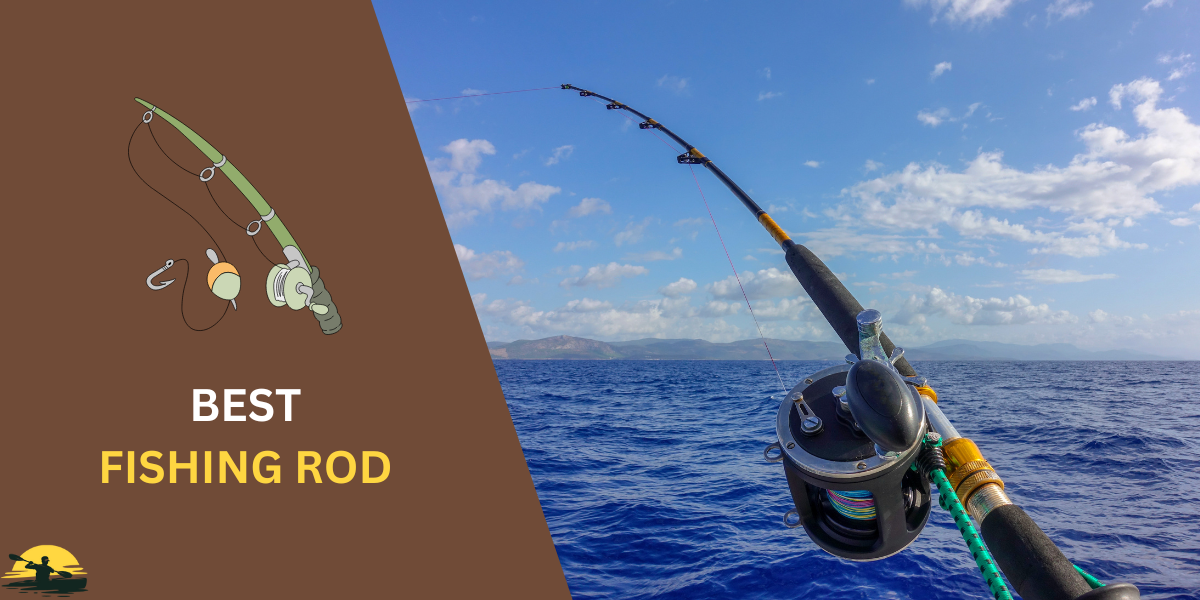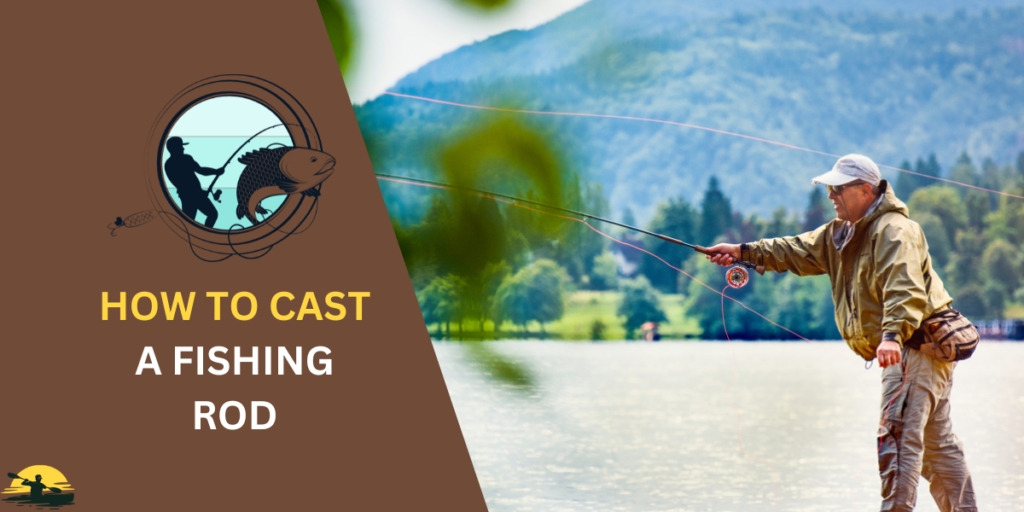
Casting a fishing rod may seem tricky, but don’t worry!
Whether you’re using a simple spinning reel or another kind, getting your bait out there is easier than you think. The key is to learn how to flick your rod tip properly, like throwing a baseball.
In this guide, we’ll break down the steps, share helpful tips, and get you casting like a pro in no time. So, grab your fishing gear.
let’s dive in!
How to Cast a Fishing Rod
- Get Your Gear Ready: Choose the right rod and reel (spinning is great for beginners), spool your reel with line, tie on your bait or lure, and adjust the drag.
- Master the Overhead Cast: Grip the rod like a hammer, stand with feet shoulder-width apart, swing the rod back smoothly, then forward, releasing your thumb to let the line fly.
- Other Casting Techniques: Try sidearm casting for tight spaces, pitching and flipping for accuracy, or roll casting when there’s not much space behind you.
- Troubleshooting: Tangled lines? Relax and untangle them. Not casting far enough? Adjust your drag and practice your technique.
- Safety First: Look around before casting, use proper form to avoid injury, and wear sunglasses and a hat for protection.
- Practice, Practice, Practice: Casting takes time to master, so don’t get discouraged. The more you practice, the better you’ll become.
Setting Up Your Gear
Alright, before we get into the actual casting, let’s make sure your fishing gear is ready to go:
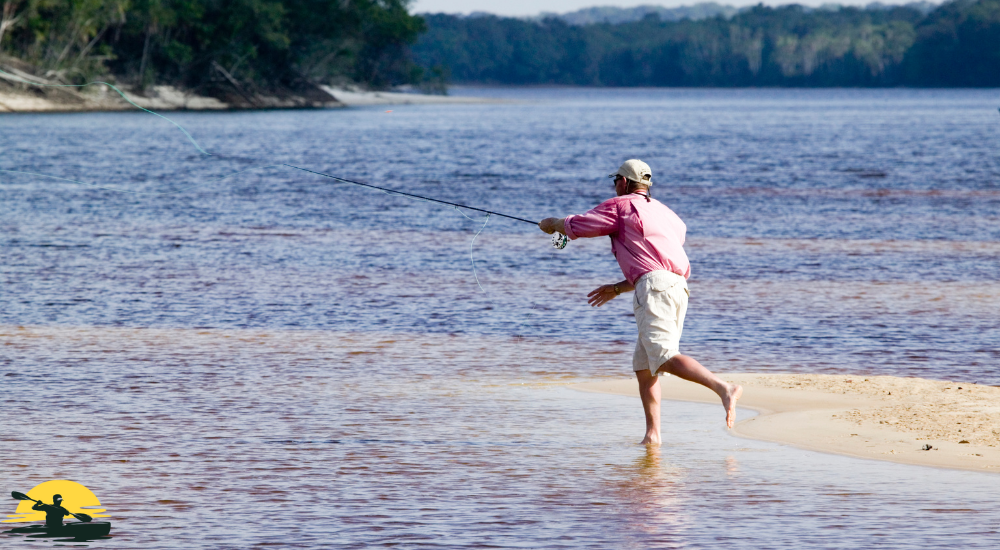
- Types of Rods and Reels: There are a few different types of fishing rods and reels out there:
- Spinning Reels: These are great for beginners because they’re easy to use and less likely to get tangled.
- Baitcasting Reels: These are for more experienced anglers.
- Fly Fishing Rods: This is a whole different type of fishing with its special gear and techniques.
- Setting Up Your Reel:
- Spooling: This means filling your reel with a fishing line. Make sure you pick the right kind of line for the fish you want to catch.
- Tying on Lure or Bait: Use a strong knot that won’t come undone. Practice tying it until you can do it quickly.
- Checking Your Drag: This is a setting on your reel that controls how easily the line comes off the spool. Adjust it so it’s not too loose or too tight.
Once you’ve got your gear all set up, you’re ready to start casting! But before we get into that, remember – safety first! Always check your surroundings and make sure there’s nobody behind you when you cast.
Casting Fundamentals
Now that your gear is set up let’s dive into the actual casting!
We’ll start with the overhead cast, which is the most common type of cast used with spinning reels and baitcasting reels (remember, fly fishing rods are a bit different).
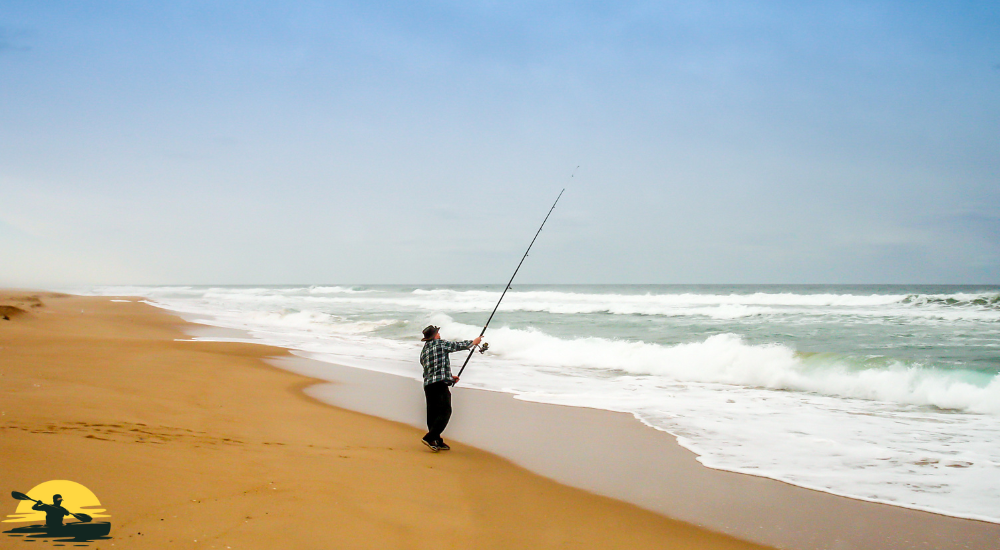
- Grip: Hold the rod in your dominant hand like you would a hammer. Your thumb should be on top of the reel’s handle, and your fingers wrapped around it for a good grip.
- Stance: Stand with your feet shoulder-width apart, your knees slightly bent, and your non-dominant foot slightly forward. This will give you a sturdy base and help you generate power for your cast.
- The Backcast: With your arm bent at the elbow, bring the rod tip back over your shoulder in a smooth motion. Imagine you’re trying to touch your shoulder blade with the rod tip. This is called the backcast, and it sets up the power for the forward cast.
- The Forward Cast: As the rod tip reaches its highest point in the backcast, quickly bring the rod forward. Think of it like throwing a baseball – you want a smooth, controlled motion. When the rod is pointing towards your target, release your thumb from the reel to let the line fly out.
- Follow Through: Keep your arm moving forward even after you’ve released the line. This is called the follow-through, and it helps ensure that your bait or lure goes where you want it to.
- Practice Makes Perfect: The overhead cast takes practice to get right. Don’t worry if you don’t get it perfect at first. Just keep practicing, and you’ll be casting like a pro in no time!
Additional casting techniques
The overhead cast is great for most situations, but sometimes you need to switch things up. Here are a few other casting techniques that might come in handy:
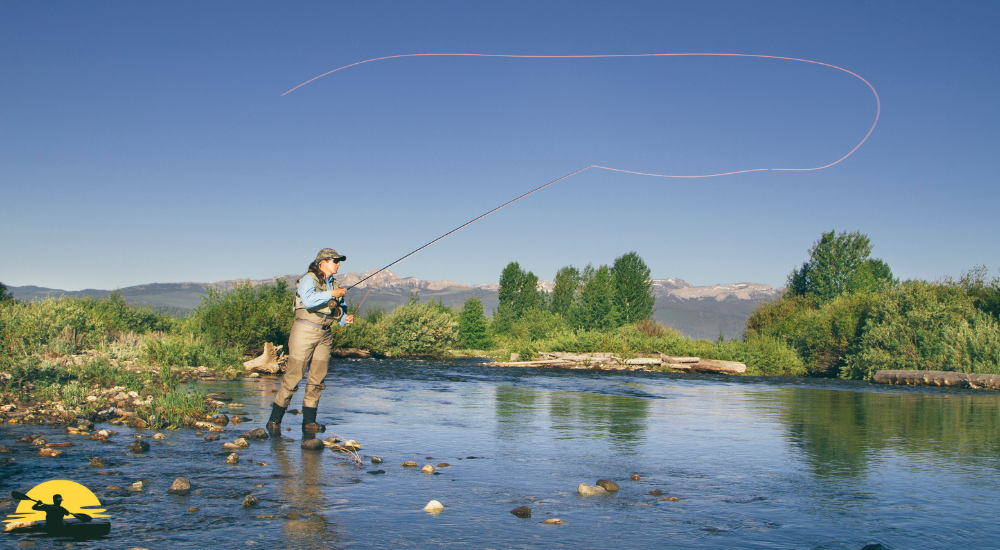
- Sidearm Cast: This is helpful when you don’t have much space above you to swing your rod back, like when you’re fishing under trees or low-hanging branches. To do a sidearm cast, hold your fishing pole out to the side instead of overhead and swing it forward like you’re skipping a rock.
- Pitching and Flipping: These techniques are used to get your bait or lure into tight spots, like under docks or around submerged logs. Pitching is like lobbing the bait in a short distance while flipping is more like swinging it underhand into a specific spot.
- Roll Cast: If you’re fishing in a place where you don’t have much room behind you, like a small stream with lots of bushes, the roll cast is your friend. Instead of a big backcast, you lift the line off the water and then roll it forward like you’re cracking a whip.
No matter which casting technique you’re using, there are a few things you can do to make your casts better:
- Practice your aim: Before you start casting for real, practice aiming your casts at a target on the ground or water. This will help you get a feel for how much power to use and how to adjust your aim for different distances.
- Watch the wind: Wind can really affect your casts, so pay attention to which way it’s blowing and adjust your aim accordingly.
- Use your index finger: When you’re casting, rest your index finger on the line in front of the reel. This will help you control the line and feel when the bait or lure hits the water.
Remember, the most important thing is to have fun and experiment with different casting techniques until you find what works best for you. With a little practice, you’ll be catching fish like a pro in no time!
Casting Problems
Even with practice, sometimes things don’t go as planned. Here are a few common casting problems and how to fix them:

- Backlashes: This is when your line gets all tangled up in a big mess on your reel. It happens most often with baitcasting reels when the spool spins faster than the line is coming off. To fix a backlash, you’ll need to be patient and carefully untangle the line. Sometimes, you might need to cut off a bit of line, but try to avoid that if you can.
- Birds Nests: This is another name for a tangled mess of lines. It can happen with any reel, and it’s usually caused by not paying attention when you’re casting. To fix a bird’s nest, try to untangle the line, or if it’s really bad, you might need to cut it off and start over.
- Poor Accuracy: If you’re not hitting your target, it could be because you’re not using the right casting technique, or you might need to adjust your aim based on the wind. Try practicing your aim with different casting techniques to see what works best for you.
- Lack of Distance: If you’re not getting enough distance on your casts, it could be because you’re not using enough power, or your drag might be too tight. Make sure your drag is set correctly, and practice your casting motion to generate more power.
Remember, everyone makes mistakes when they’re learning how to cast.
Don’t get discouraged if you run into some problems. Just keep practicing and try different casting techniques until you find what works best for you.
Safety Tips for Casting
Before you head out to the lake or river, let’s talk about safety. Casting a fishing rod can be a lot of fun, but it’s important to be careful. Here are a few things to keep in mind:
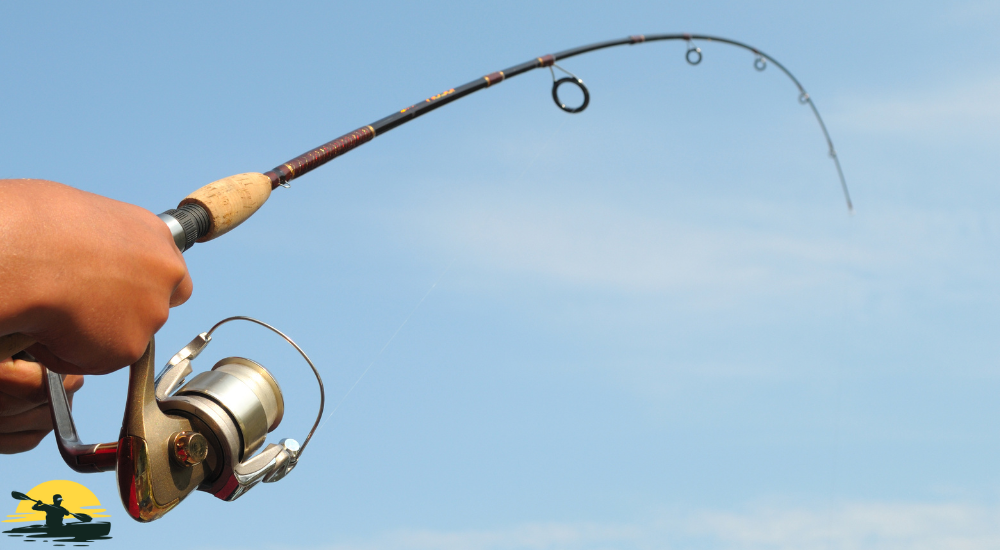
- Look Around: Before you cast, take a quick look around to make sure there’s nobody behind you or nearby. You don’t want to hook someone with your bait or lure accidentally!
- Perfect Your Form: Using the right casting technique will not only help you cast farther and more accurately, but it will also help prevent injuries. If you’re using a fly rod, fly fishing rod, or baitcasting reel, practice the techniques until you feel comfortable with them.
- Protect Yourself: Wear sunglasses to protect your eyes from the sun and a hat to keep the sun off your face and neck. If you’re fishing in an area with a lot of bugs, you might also want to wear some insect repellent.
Remember, safety always comes first. By following these simple tips, you can enjoy your fishing trips without any worries. So, get out there and have fun casting! And don’t forget, practice makes perfect. The more you practice, the better you’ll get at casting and the more fish you’ll catch.
Conclusion
So there you have it! You’re now armed with the knowledge to cast a fishing rod like a champ. Remember, the key is to practice.
Get comfortable with your grip on the rod, experiment with the backcast and follow-through, and don’t be afraid to try out different casting techniques. Start in your backyard or a park, casting towards a target.
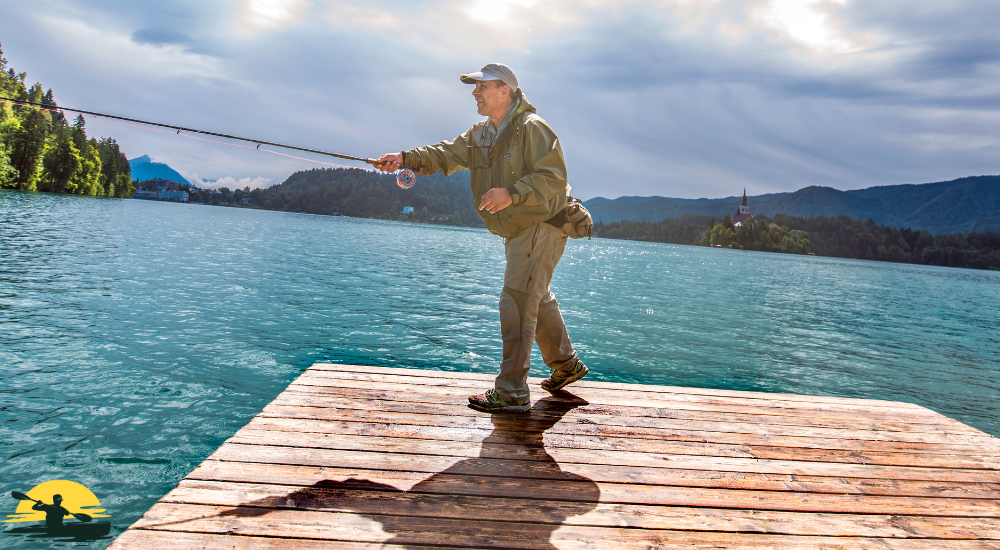
If you run into any problems, don’t worry. Even experienced anglers get tangled lines sometimes. Just take a deep breath and untangle that bird’s nest or reel foot.
If you’re having trouble getting distance, try adjusting the drag on your reel or practicing your casting motion. And hey, don’t be scared to ask for help from other anglers! Most people who love fishing are happy to share their tips and tricks.
So, get out there, have fun, and enjoy the thrill of casting your line and reeling in a big one!
Frequently Asked Questions
What is the best way to hold a fishing rod when casting?
Hold the rod in your dominant hand like you would a hammer, with your thumb on top of the reel’s handle and your fingers wrapped around it.
How do I prevent my line from getting tangled when I cast?
Make sure your drag is set correctly (not too loose or too tight), and practice your casting motion so you can control the speed of the line release.
What should I do if I get a backlash?
Don’t panic! Gently try to untangle the line. If that doesn’t work, you might have to cut off a small bit.
What’s the difference between pitching and flipping?
Pitching is a gentle underhand toss to get your bait or lure into a specific spot. Flipping is similar but involves more of a swinging motion.




